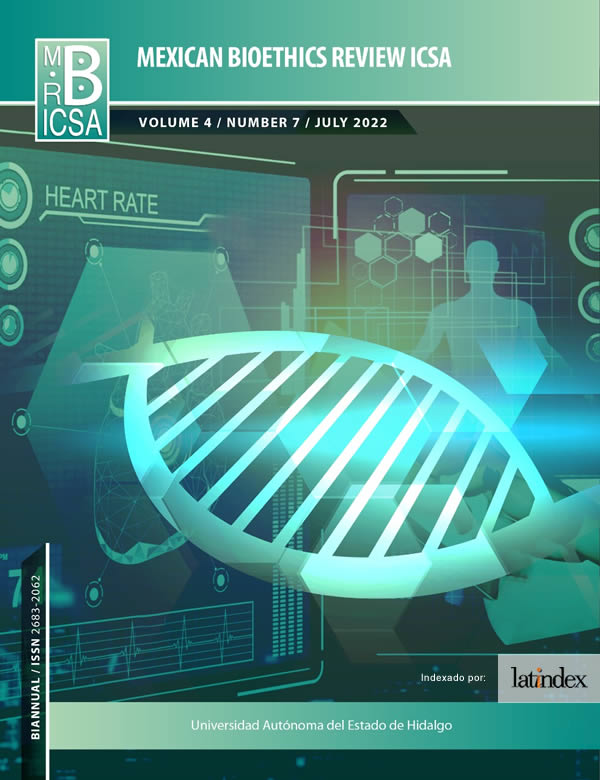Strengthen the autonomy of the research subject by protecting their personal data.
Abstract
In research involving human beings, it is a fundamental element that the research subject grants his or her informed consent. Among the requirements that are considered essential for this figure to be considered existing, is the obligation on the part of the researcher to offer an explanation of various aspects, among which the preservation of the confidentiality of the information related to the subject is contemplated, but , in addition to the certainty that they will not be identified. This document reflects on the importance of the researcher also complying with current regulations on the protection of personal data, in order, in turn, to be able to guarantee the Confidentiality in the informed consent which, consequently, would allow a free, informed and specific decision about their participation in the research in question.
Downloads
References
AEPD (2016). Orientaciones y garantías en los procedimientos de anonimización de datos personales. Madrid: AEPD.
Constitución Política de los Estados Unidos Mexicanos. Diario Oficial de la Federación. Palacio Nacional de la Ciudad de Querétaro, 05 de febrero de 1917. Recuperado el 02 de diciembre de 2021 de http://www.diputados.gob.mx/LeyesBiblio/pdf/CPEUM.pdf
CNDH. (s. f.). Convenio para la Protección de los Derechos Humanos y la Dignidad del Ser Humano, respecto de las aplicaciones de la Biología y Medicina | Comisión Nacional de los Derechos Humanos - México. Comisión Nacional de Derechos Humanos. Recuperado 15 de diciembre de 2021, de https://www.cndh.org.mx/noticia/convenio-para-la-proteccion-de-los-derechos-humanos-y-la-dignidad-del-ser-humano-respecto
Grupo de trabajo del artículo 29 (2014). Dictamen 0572014 sobre técnicas de anonimización. Bruselas: Grupo de trabajo sobre protección de datos del artículo 29.
INAI. (2015). Guía para implementar un sistema de gestión seguridad de datos personales. México: INAI.
INAI. (2015). Metodología de análisis de riesgo. México: INAI. Obtenido de http://corpusiurispdp.inai.org.mx/iberoamericano/OtrosDocumentos/MetodologiaAnalisisRiesgos.pdf#search=disociaci%C3%B3n
INAI. (2016). Guía para cumplir con los principios y deberes de la Ley federal de protección de datos personales en protección de particulares. México: INAI.
Ley Federal de Protección de Datos Personales en Posesión de Particulares. Diario Oficial de la Federación, 05 de julio de 2010. Recuperado el 02 de diciembre de 2021 de http://www.diputados.gob.mx/LeyesBiblio/pdf/LFPDPPP.pdf
Ley General de Protección de Datos Personales en Posesión de Sujetos Obligados. Diario Oficial de la Federación, 26 de enero de 2017. Recuperado el 02 de diciembre de 2021 de http://www.diputados.gob.mx/LeyesBiblio/pdf/LGPDPPSO.pdf
Maqueo, M. (2018). Ley general de protección de datos personales, comentada. México: INAI.
Reglamento de la Ley General de Salud en materia de Investigación para la Salud. Diario Oficial de la Federación, 06 de enero de 1987. Recuperado el 02 de diciembre de 2021 de http://www.diputados.gob.mx/LeyesBiblio/regley/Reg_LGS_MIS.pdf
Romeo Casabona, C. (2005). Utilización de muestras biológicas y bancos para la investigación biomédica. En I. (. Brena Sesma, Saud y derecho. Memoria del Congreso Internacional de Culturas y Sistemas Jurídicos Comparados (págs. 31-62). México: UNAM.
Copyright (c) 2022 Ana Guadalupe Olvera-Arellano

This work is licensed under a Creative Commons Attribution-NonCommercial-NoDerivatives 4.0 International License.








